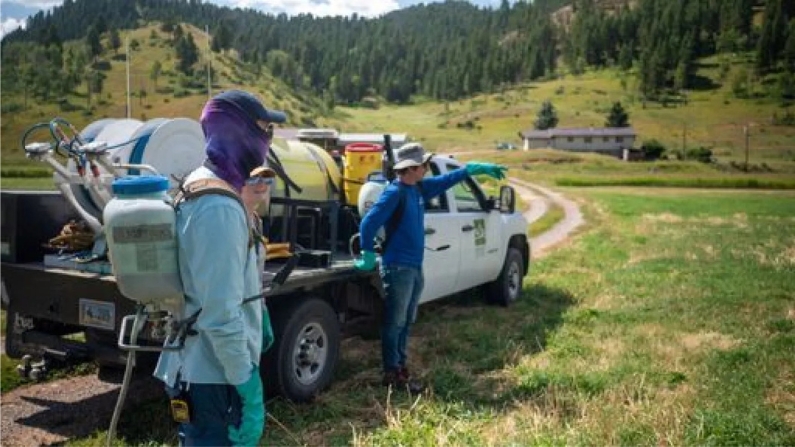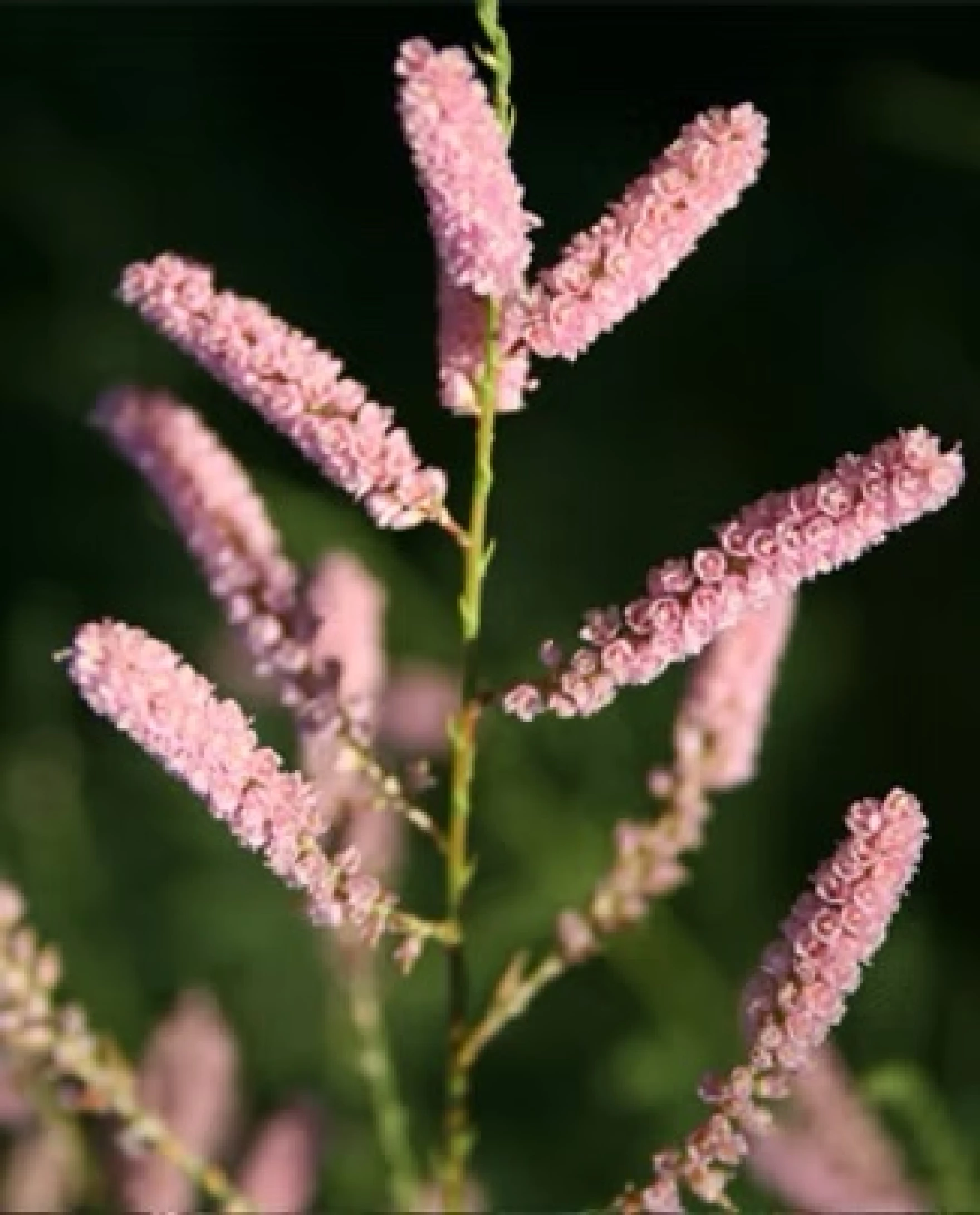Spraying for weeds isn’t cheap. Over the 2021 season, about $9.5 million went into the state program.
But the cost of not doing anything?
“It’s a loss of resources,” said Wyoming’s Weed and Pest Coordinator Lindsey Woodward. “In an ag setting, that’s people’s livelihoods. In a natural setting, that’s wildlife damage. It’s also a degradation of a natural ecosystem.”
Woodward said preemptive weed spraying is cost-effective. Take cheatgrass, a weed that’s hijacked parts of Wyoming’s landscape and can increase wildfire risk.
“If we’d been able to react as aggressively when cheatgrass was first showing up, it would have saved millions and millions of dollars, and many, many thousands of hours of labor, ” she said.
But how aggressively Wyoming’s 23 Weed and Pest Districts can react to invasives this year is up in the air. That’s because cumulatively, they rely on millions of federal dollars to spray for invasive weeds, and recent federal cuts and freezes are putting some of those dollars into question for the upcoming season, not just in Wyoming but around the country.
For example, the DOGE website lists at least 11 federal weed control contracts as terminated in Idaho. Also, reporting in Michigan shows there’s concern for the future management of invasive species like sea lamprey.
“It’s a real hodgepodge. It really depends on the federal agency, and it depends on within that agency, what their grant source was,” Woodward said. “So it’s all over the board. Some are intact, some are frozen, across all the districts and across all the agencies.”
Woodward said she doesn’t know specifics yet from each district.
“Everybody’s kind of waiting for the other shoe to drop, but they’re planning to go ahead as aggressively as they can right now and be as close to normal,” she said.
By waiting for the other shoe to drop, Woodward said she means the districts are waiting to see what funds survive the federal cuts. Also, as federal freezes are slowly lifted, they’re waiting to see which funds are intact.
A version of this played out on the DOGE website recently. A $175,000 federal Department of the Interior (DOI) contract for weed control in Platte County was listed as terminated on Feb. 27. However, it’s since been removed from DOGE’s site. Whether that means the money will still come through is unclear. The Platte County Weed and Pest District didn’t respond to a request for comment.
Woodward said she wasn’t familiar with the contract. But generally speaking, she said if federal funding doesn’t come through like normal for the districts, this upcoming season could look different.
“A district would have to prioritize what it’s working on,” she said. “If you had a more invasive species, you’d probably prioritize that. It might change how much crew you hire.”
Woodward said the base funding for the 23 districts, which were formally established in 1973, is a county mill levy that varies county by county. Each district supplements funding with federal and non-federal grants.
Woodward said Wyoming is unique in that the districts typically take on a big chunk of the cost-burden for weed and pest control, relieving the financial hit to private landowners. So if that federal funding is cut short?
“I think that some of that responsibility goes back to landowners, so they’re gonna have to pay for more of it,” Woodward said.
It could also mean pulling more from the mill levy. But Woodward said the Wyoming Legislature’s recent 25% cut to property taxes could hinder those efforts down the road.
Either way, Woodward said she feels confident districts will find a way to “hold the line” with their ongoing invasive species control, even if they have less money and smaller crews. The alternative means losing years of progress.
Woodward pointed to salt cedar, an invasive green shrub with pink-white flowers. It’s being treated with beatles in Goshen, Fremont, Hot Springs, Natrona, Johnson, Sheridan, Sweetwater and Washakie counties.
“If salt cedar invades a watershed area, they change the actual makeup of the soil, so it becomes more saline,” Woodward said. “And over time, nothing will grow there but salt cedar, and so recovering that once the weeds are established is much harder than if we get on the front end of that.”
Woodward pointed to other projects districts have recently taken on that are a success. For example, treating the 2020 Mullen Fire burn scar in Carbon County for cheatgrass.
“Cheatgrass just thrives on a fire cycle,” she said. “So when they had that big fire, they scrambled. A lot of resources, a lot of partners, both private sector and public sector, that jumped on that.”
Another novel project is using trained dogs to sniff out weeds in Teton County.
“They put these dogs on rafts on the Snake River, and they let them out on all the sandbars,” Woodward said. “These dogs detect these weeds. It’s just a few plants here and there, but they can spray every one because they have the dogs onsite.”
Woodward reiterated that ongoing projects will likely continue regardless of federal funding. But new projects may be put on hold, which could have long term implications.
“We really preach early detection, rapid response,” Woodward said. “So the amount of work and expense that is saved by getting on top of an infestation early when there’s a few plants, it makes all the difference in the world.”
When the districts will get clarity from the federal government on funding is still unknown. Woodward said it’s a wait and see situation.







